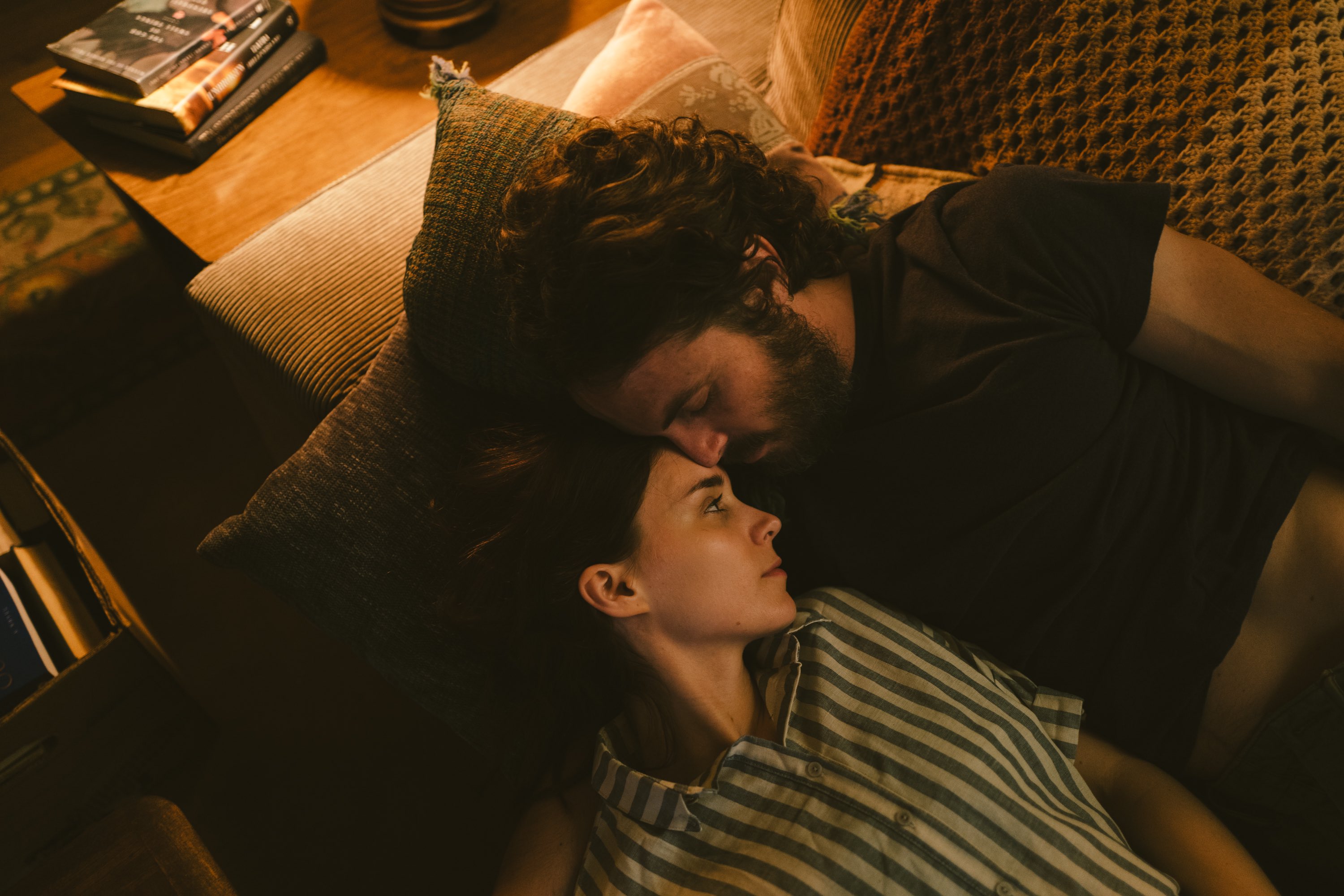By taking the most recognizable iconography of a ghost in Western culture – a white sheet with two black holes for eyes – director David Lowery formulated an unexpectedly profound work about the perils of the afterlife from the perspective of a cotton-clad figure traveling through time and space. A Ghost Story, which premiered earlier this year at the Sundance Film Festival and stars Oscar-winner Casey Affleck, Rooney Mara, and singer Kesha in a brief cameo, is a metaphysical love tale set in motion when a young musician dies tragically and returns as an ethereal entity to watch over his wife.
Lowery’s most unconventional film to date, A Ghost Story questions our fascination with what comes after our earthly time is over, and our quest to endure through memory or legacy. Elsewhere, you’ll find extensive discussions about the pie-eating scene in which Rooney Mara grieves though compulsive food consumption, but very little has been written about one of the crucial sequences in this one-of-a-kind existentialist drama. Once Mara’s character has decided to move on and leaves the house she shared with her deceased partner, a new family moves in, a Spanish-speaking Latino family. Maria, played by actress Sonia Acevedo, and her two children start a new life in this home, but the ghost is not pleased with their presence and makes it known to them.
Lowery, who is captivated by the Mexican tradition of Día de Muertos, shared insight on this specific segment of the movie and the reasoning behind its lack of subtitles with me during a recent interview in Los Angeles.
“I wrote all of the dialogue in English, and then I had it translated to Spanish. I speak Spanish a little bit, but not well enough to actually write it myself. I just love the language,” he explains about making the dialogue sound as genuine as possible. It’s a respectful gesture from a filmmaker who pays attention to representational details, such as the accuracy of the lines and casting actors that can actually speak the language, (unlike recent examples like the disastrous “Spanish” spoken in Denis Villeneuve’s Sicario).
As the scene unfolds, we see the single mother and the kids adjusting to the new place, and occasionally hear her speak on the phone about a toxic relationship in her past, presumably with the children’s father. The ghost roams around upset until he makes contact, initially with the young boy, Carlitos (Carlos Bermudez), and his sister Yasmina (Yasmina Gutierrez), who run scared out of the room.
“I was directing purely on an emotional level.”
“That part of the movie was supposed to be like Poltergeist, or a classic Spielberg movie, and I thought, ‘I live in Texas, and Texas is very multi-cultural, and if another white family moves in that would just be boring, so let’s expand our horizons a little bit,’” explains Lowery. His thematic intention blended with a conscious decision to represent the people of color around him in his home state.
When the ghost realizes that his efforts are failing, he decides to take a more violent approach, which pits him against a Latina mom not willing to back down so easily. “I love that sequence in the film. I really loved those characters, and I love that, in spite of the fact that it’s sort of a remake of Poltergeist, at the end of it, they don’t run out of the house screaming. It also gave me a chance to use a language that I find very beautiful. I love listening to it. I think it’s a beautiful language, and I wish I spoke it better.”

On an already peculiar set, where the protagonist spends almost the entirety of the film under a sheet, Lowery found himself in the unfamiliar position directing scenes in another language. “Directing in Spanish was really a special experience for me, because I know just enough to understand what’s being said. I wrote the dialogue in English, so that helped, and I had read the script in Spanish and understood vaguely what the actors were saying in the scenes, but they speak faster than I could comprehend, particularly Sonia Acevedo, the mother, who’s a wonderful actress.”
Lowery eschewed heady explanations in favor of a more spiritual method of communicating with his actors, so the language of the text didn’t interfere with getting the key messages across. “I wasn’t able to give her directions in the normal sense, because I couldn’t quite say exactly what line I wanted her to make an adjustment on, so I was directing purely on an emotional level. I was listening to it, and responding to the emotions that she was displaying. I enjoyed that process so much that I didn’t want to muddy it up with subtitles.” Spanish-speakers get an extra layer of context, but for Lowery subtitles were not essential. “I certainly wasn’t opposed to subtitles, because I used them elsewhere in the movie, but for that sequence, I just wanted to let it be about a family that speaks Spanish. If you understand what they’re saying, I think it does add things to the film, but if you don’t it’s still ok, because the emotion is all there.” A Ghost Story is truly a breathtaking experience.
Just before our chat is over, Lowery reminds me one more time why he loves Spanish “Spanish, which is again a language that I love, is the language of magical realism to me. I think of all the great Spanish poets and Gabriel García Márquez, which added so much to the film. I’m glad that you appreciated it, because it was one of my favorite parts of the movie to make. “
A Ghost Story opened in Los Angeles and New York on July 7 and has since expanded to more cities.







